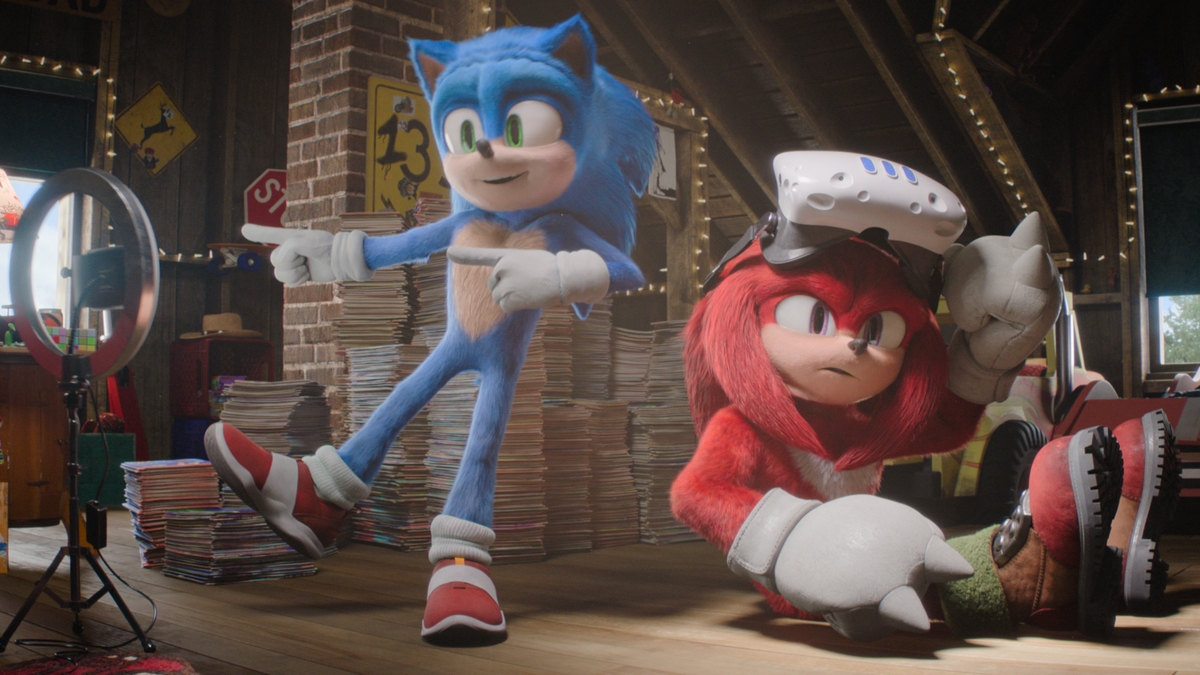
Despite its popularity, the puzzle-platformer genre remains a tricky thing to pull off successfully. Plenty of games have tried to meld the two genres together, but most either screw up on one side or the other. How many platformers have you played with lackluster puzzles? Or how many puzzle games have you played with shoe-horned in platforming sections? Developer Fiddlestick Games has decided to try their hand in combining the two with Hue, which frankly, already stands out on visuals alone.
As the titular Hue, you are granted use of the Annular Spectrum, a fancy name for a color-changing ring. What this does is not change the color of you yourself, but rather the color of the world around you. The world you inhabit is a dreary grey, but you have the ability to change it as you please. Of course, the ring is used for more than just making the world look more interesting. It’s a necessary tool for figuring out what happened to Hue’s mother, who also invented the ring.
Led along by both a mysterious figure and written letters from his mom, Hue must navigate a series of increasingly devious rooms. In order to do this, you must change the look of the world around you using the ring. Almost every object, laser beam and giant rock is assigned a specific color. If you need to get around a pink rock, you would turn the world pink in order to make it disappear, so to speak. However, if you change the color of the world, a different object that was previously obscured may re-appear.
Fiddlestick Games boils down the levels of the game into two categories: methodically-paced puzzles and fast-paced sequences. The slower puzzles have Hue carefully push around boxes in order to both reach new areas, and avoid one shot killing lasers. The more action heavy segments have you rapidly switching from color to color in order to hop across platforms. Thankfully, during these faster sections, time slows down when you open up the color wheel. Both types of levels though follow the same basic pattern of changing the color in order to phase in and out different objects.

Although tricky in parts, Hue is more relaxing than stressful. With no timer, and little in the way of hazards, players are given plenty of time to suss out solutions for levels. Even the more hectic rooms aren’t too bad due to the time slowing down when you switch colors. I hesitate to say the game is for all-ages, though. While it may be easy to see what you have to do, figuring out exactly how to do it can take a little bit to understand. In the pantheon of puzzle platformers, the title is easier than most, but still somewhat challenging.
Typically I prefer lean experiences to over-stuffed adventures, but I do wish Hue lasted a little longer. The main game only takes a few hours to run through. Factor in a little more time to collect all 28 hidden beakers, and you can conceivably 100% the game in a single sitting. The brief length means that you don’t even get full access to the color wheel until you’re past the half-way point. While earlier sections will still require some critical thinking, a vast majority of the truly challenging puzzles are crammed into the final two chapters.
Getting back to the storyline, I was surprised at how engaged I was with the tale of Hue and his mother. Told mostly through voiceover, learning what happened to Hue’s mother is heartbreaking — not only because of her regret over everything that has happened, but also because of how it happened. Her relationship with the mysterious Mr. Grey touches upon themes of regret and arrogance. You don’t necessarily need to pay attention to the story to have fun, but it’s certainly better than I was expecting going in.
The best way to describe the aesthetics of Hue is by imagining if someone took Playdead’s Limbo and splashed it with paint. Both platformers feature almost shadow-like main characters. But rather than wallow in the darkness, Fiddlestick Games’ puzzler embraces vibrant pigments. Each of the colors on the wheel pop on screen, and stand out against the dark world that surrounds them. It would have been nice to have a little more variety in the level design, but that’s certainly not a dealbreaker. For the colorblind gamers out there, there’s also a full option to play the game using symbols instead of colors — a commitment to accessibility that’s absolutely fantastic to see.
When the worst thing I can say about your game is that it doesn’t last long enough, you know you’ve done well. Hue is a remarkable experience, and is hopefully a sign of things to come from Fiddlestick Games. The title successfully bridges the gap between puzzle and platformer in a way that many have not been able to. Combined with gorgeous visuals and a touching plot, the game adds up to be a late-summer surprise I didn’t see coming.
This review was based on the PlayStation 4 version of the game, which we were provided with.






